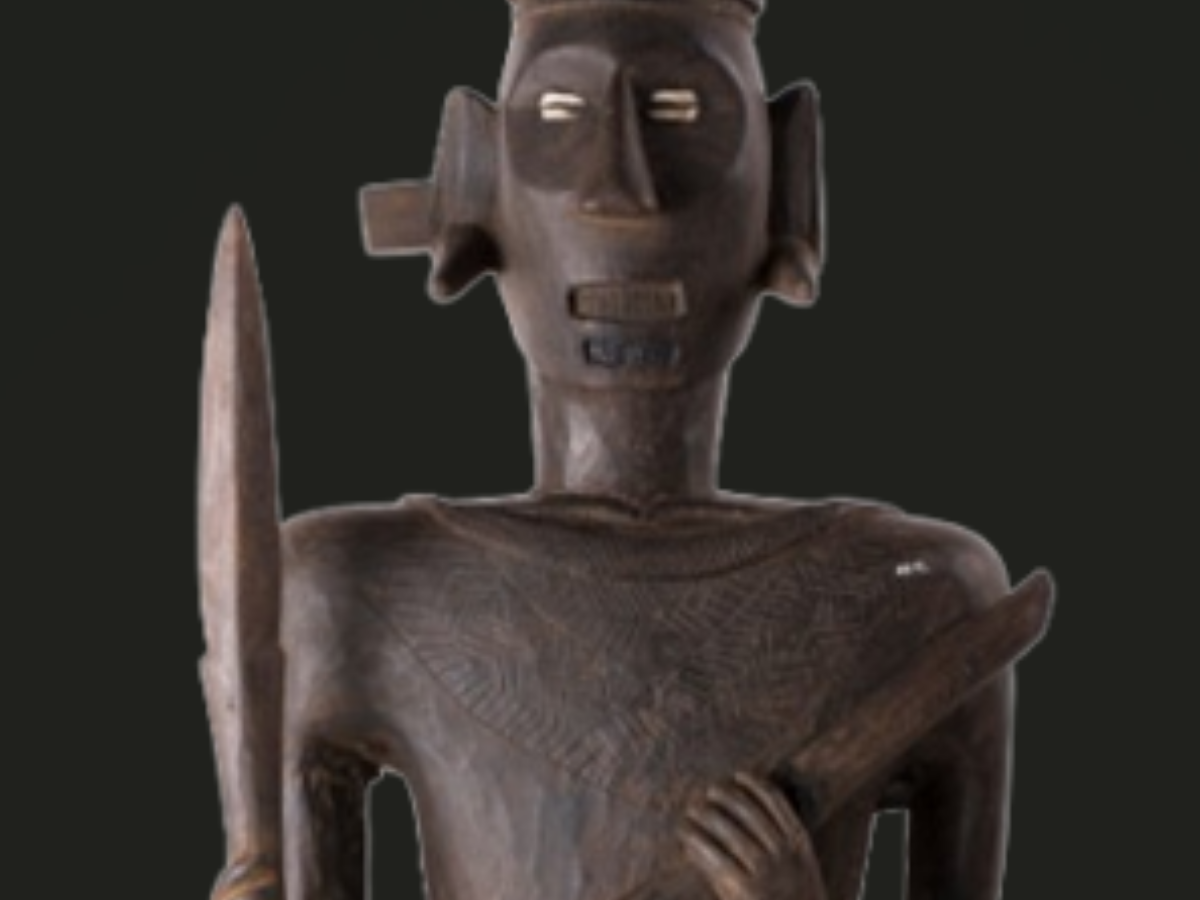State
Tribe Name
Art Type
short description
The Konyak tribe of Nagaland, is renowned for its fierce warrior traditions, particularly for headhunting culture This standing wooden sculpture represents a Konyak warrior or chieftain, embodying the tribe’s rich heritage and martial legacy.
Thumbnail

Filter Postion
Left
Filter Background
Off
Theme
Filter Header Image

content
Image

description
The Konyak tribe of Nagaland, is renowned for its fierce warrior traditions, particularly for headhunting culture This standing wooden sculpture represents a Konyak warrior or chieftain, embodying the tribe’s rich heritage and martial legacy.
The figure is shown as armed with a spear and rifle, her back quiver carrying a sword (dao) bound by cross-strap. The conical helmet modeled with hornbill beak articulates a notion of bravery and status: it was customarily adorned by soldiers who had actually earned their spurs in bravery. The lower garment, having the main pleating tucked into a girdle, has been symbolic wear for Konyak warriors.
Most noticeable about this culture are facial tattoos engraved on the figure, especially on the chin, which were awarded only to a person that successfully participated in a headhunting raid. They were, therefore, symbols of bravery, but also represented social standing and prestige. The abstract motifs on his upper body may also represent either warrior achievement symbols or tribal symbols.
This wooden sculpture in the National Museum, New Delhi, is, therefore, a symbol of the Konyak tribe's warrior tradition, telling us about a people for whom headhunting became an identity. Konyak elders with these tattoos, very much alive today, are vessels of a bygone era, an era when headhunting formed an integral aspect of their identity and were the witnesses to the account of their tribe.
The figure is shown as armed with a spear and rifle, her back quiver carrying a sword (dao) bound by cross-strap. The conical helmet modeled with hornbill beak articulates a notion of bravery and status: it was customarily adorned by soldiers who had actually earned their spurs in bravery. The lower garment, having the main pleating tucked into a girdle, has been symbolic wear for Konyak warriors.
Most noticeable about this culture are facial tattoos engraved on the figure, especially on the chin, which were awarded only to a person that successfully participated in a headhunting raid. They were, therefore, symbols of bravery, but also represented social standing and prestige. The abstract motifs on his upper body may also represent either warrior achievement symbols or tribal symbols.
This wooden sculpture in the National Museum, New Delhi, is, therefore, a symbol of the Konyak tribe's warrior tradition, telling us about a people for whom headhunting became an identity. Konyak elders with these tattoos, very much alive today, are vessels of a bygone era, an era when headhunting formed an integral aspect of their identity and were the witnesses to the account of their tribe.
Image Mode
landscape
promoted
On
Verified
Off
